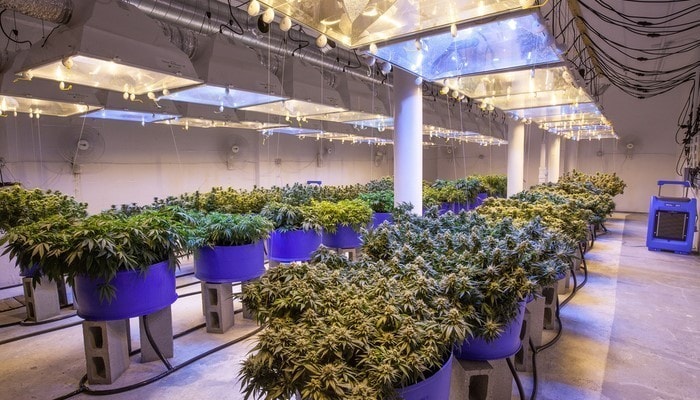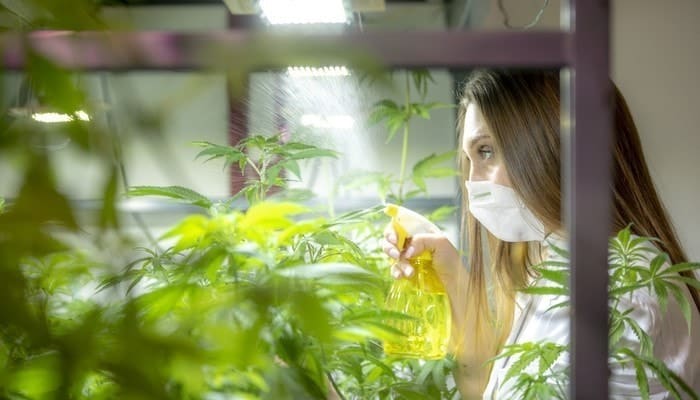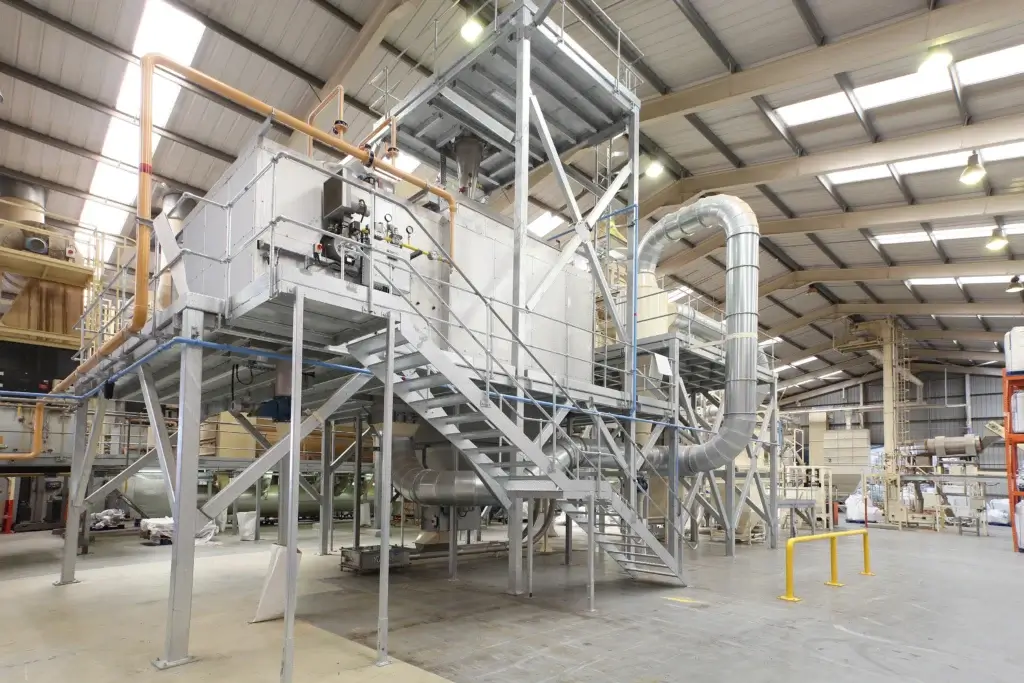Embark on a journey into the diverse realm of industrial hemp, an extraordinary and sustainable resource with limitless potential. But first, how is industrial hemp processed? Learn all about conveyor engineering and turn this plant into a multi-billion-dollar powerhouse. Check out how innovation meets sustainability on a grand scale and the world of industrial hemp processing.
How Is Industrial Hemp Processed?
Industrial hemp undergoes a meticulous process involving harvesting, which varies based on the intended product, followed by thorough cleaning and drying. The different parts of the plant, including stalks, flowers, and seeds, are then processed using methods like decortication and retting.
Industrial hemp proves to be a highly adaptable and sustainable asset, with applications spanning numerous industries. Its versatility extends from the production of hemp milk, hempcrete, and hemp fiber to serving as a source of biofuel. The Cannabis sativa plant, with its myriad uses, gained a significant boost with the enactment of the 2018 Farm Bill, marking the federal legalization of hemp. This pivotal move positions the hemp industry to emerge as a potent force, projecting a trajectory toward a multi-billion dollar market.
Diverse Applications and the Versatility of Industrial Hemp Components
The reason why there is such a wide variety of industrial hemp products is that each component of the hemp plant can be used, from the roots and leaves to the flowers and stalks. As the industrial hemp crop has a variety of applications, harvesting and processing methods will depend on the final product. Also, keep this in mind when choosing between manufacturing conveyor systems, and pick the automatic conveyor system that will suit your needs the best.

Explore the Different Uses of Industrial Hemp
From the sturdy fibers of the stalk used in textiles and construction to the nourishing seeds transformed into oils and superfoods, each part of the industrial hemp plant plays a unique role in an array of industries.
However, keep in mind that for CBD hemp to be legal, it should not contain more than 0.3% tetrahydrocannabinol (THC). To ensure this, the processing plant may also conduct THC testing. Now, let’s proceed with discovering how different parts of industrial hemp can be processed:
- Stalks and stems – These can also be processed for CBD extraction for low-THC CBD production. Hemp was legalized as a result of the Farm Bill because, unlike marijuana, it has relatively little THC. It’s the high THC level in marijuana that makes it psychoactive.
- Leaves and flowers – These can be used for food products like teas and can also be pressed for their rich seed oil. Hemp oil is extracted directly from hemp flower seeds. These seeds also have a variety of uses and are often sold in health stores as a superfood. They can take the form of supplement powders or be used in bread, beer, cooking oils, milk, and flour.
- Roots – The roots of the plant are often overlooked. However, the roots have been used for thousands of years for their medicinal properties. The roots typically go through juicing and boiling processes. They often also end up as biomass.
- Hemp biomass – It is leftover raw materials that can be used in a variety of ways. Many hemp farmers sell wholesale biomass to concentrate processors who make specialized products like hemp oil, CBD oil, CBD isolate, and CBD distillate. The biomass can also undergo a fermentation process that turns it into hemp ethanol or energy fuel.
No matter the specific purpose for which the hemp harvest is destined, a crucial initial step involves cleaning and drying the plant to ready it for further processing. Subsequently, the hemp stalks are directed to either a decortication plant or a retting facility, while the hemp flowers, buds, and seeds undergo processes such as bucking, de-budding, and dehulling.

Stages of the Hemp Flower and Seed Processing
Timing is everything when it comes to growing hemp for seed or grain production. What makes harvesting hemp for its seeds difficult is the different maturation rates of the other parts of the same plant. It is not uncommon for seeds at the top of the plant to already be split open, signifying maturity, while the seeds lower down will not be ready for harvesting. Therefore, the goal is to harvest when the risk of seed loss is lowest. Harvesting hemp prematurely can result in non-viable seeds and loss of product.
When hemp farmers determine the optimal time to harvest the plant, bucking machines or destemmers/debudders are used to cut the flowering head from the plant. The plant is sorted, separating the parts – flowers will go to seed production processing, while stalks will go to fiber processing.
Matured seeds will be split open, making careful handling of the hemp seeds vital to maintaining the integrity of the seeds. They need to be removed from the flower head gently. The whole hemp seed will have a crunchy outer shell that will need to be removed through a dehulling process.
Implementing Modern Techniques for Hemp Seed Processing
In the past, dehulling was done by hand, making the manual process of dehulling tedious and prone to product loss. Today, modern dehulling machines use gentle vibration to remove the seed’s hard outer shell. The machine also cleans hull residues and collects kernels for disposal.
Depending on the hemp processing plant, the seeds may either go to storage or move to another phase in the facility. It may go on to become hemp seed oil. Before storage or packing, the hemp seeds will move to the cleaning conveyor belts and hemp drying facilities. After that, they’ll go to the tubular conveyor or more traditional conveyor belt system.
Modernizing Industrial Conveyor Systems for Sustainable Hemp Processing
Low-impact conveyor technologies are crucial at this point to prevent damage. For this reason, the industry is increasingly eliminating the use of a traditional belt conveyor system that has proven to lead to product loss and wastage, such as augers and bucket elevators.
For example, vacuums may run too fast with little control, bucket elevators require excessive maintenance, screw augers ruin the seed’s integrity by grinding action, and pneumatics cause inefficient usage of available energy.
On the other hand, tubular cable and disc conveyors have been known to be the most efficient conveyor solutions for industrial hemp seed processing. They are gentle on the conveyed material, safe for the facility environment, and extremely cost-effective.

Stages of Hemp Stalk Processing
As the hemp plant’s most versatile part, the stalk can make everything from paper and clothing to rope and building materials. The hemp stalk can be broken down into different components that can be used differently. For example, its fibers can be removed to make textiles, which are often blended into other fibers.
Hemp farms begin harvesting for fiber production when the plants are in early bloom. For generations, hemp harvesting was performed manually. A hemp farmer would separate the bast fiber from the hurd by hand. Bast fiber is strong, which explains why it is the part of the plant used to make rope and canvas-like boat sails.
Because the fiber is incredibly strong, the process was painstaking and required a lot of strength. Thanks to technology and the development of automated conveyor systems, manually separating the raw fiber from the hemp stalk is no longer necessary.
Fiber Extraction Techniques – Decortication and Retting for Industrial Hemp Stalks
Today, separating the best fiber from the hemp plant’s woody core, or the hurd, can be approached in two ways. The first is through a mechanical process called decortication. Decortication equipment removes the woody interior from the stalk’s fibrous exterior. After hemp decortication, the fiber is scutched using a scutcher in preparation for spinning. The process also removes any impurities or residue, such as seed or hurd particles. The result is long lines of fiber that will be hackled or combed to remove broken fibers and align the fibers.
The other way to process the hemp stalk for fiber production is through retting, which breaks down the bark tissue that binds the natural fiber to the stalk. There are various retting methods, including dew retting, water retting, warm water retting, green retting, and chemical retting. Of the retting methods, dew retting takes the longest as it takes up to five weeks. Water retting takes seven to ten days, while chemical retting takes as little as 48 hours.
Cablevey Conveyors Is One of the Top-Notch Conveyor Systems Manufacturers on the Market
How hemp manufacturers process hemp depends entirely on the final product. Different uses of the hemp plant require specific equipment and methods to process industrial hemp. What all hemp processors have in common is the need for advanced technology and equipment, such as an automated conveyor system, to minimize wastage and eliminate contamination from pests and diseases.
If you’d like to increase productivity in your hemp processing facilities, why not look into automating material transport? A tubular conveying system can greatly improve your processing capacity and reduce labor costs and the risk of human errors. Contact Cablevey Conveyors to learn more about conveyor manufacturing and the best type of conveyor for your plant and equipment today.






